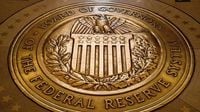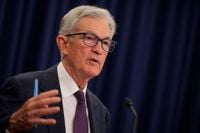In a move that’s sent ripples through the financial world, the Federal Reserve cut its benchmark federal funds rate by 25 basis points on September 17, 2025, bringing the target range down to 4.00%-4.25%. This marks the central bank’s first rate cut of the year, following months of speculation, persistent pressure from President Donald Trump, and mounting signs of a slowing economy. The decision, announced by Fed Chair Jerome Powell, has immediate implications for consumers, small businesses, and even the housing market in places like Florida, where buyers and sellers alike are watching closely.
For anyone with a savings account, the Fed’s move might seem a little distant—after all, the central bank doesn’t directly set the interest rates banks offer on savings. But as reported by Bankrate and Forbes, the federal funds rate is the backbone of the nation’s financial system, influencing everything from savings account yields to mortgage rates and business loans. When the Fed acts, banks and credit unions often follow suit, adjusting their rates on deposit accounts and loans accordingly. That’s why, after the September cut, high-yield savings account (HYSA) APYs—while still as high as 5% in some cases—are now expected to drift downward if more cuts follow.
“Recent indicators suggest that growth of economic activity moderated in the first half of the year. Job gains have slowed, and the unemployment rate has edged up but remains low. Inflation has moved up and remains somewhat elevated,” the Fed said in its official statement, echoing the sense of caution that’s gripped policymakers. According to Reuters, the Consumer Price Index (CPI) rose 2.9% year-over-year in August 2025, with a 0.4% bump from July—the highest monthly inflation figure since January. Despite this, the disappointing August jobs report, which showed just 22,000 new jobs, signaled to the Fed that the labor market’s momentum was fading.
Chair Powell’s press conference in Washington, DC, reflected the central bank’s balancing act. The Fed has two mandates—targeting 2% inflation and full employment. Powell acknowledged the pressure from President Trump, who had been vocal about his desire for lower rates, but insisted the decision was based on economic data. “We have to look at both sides of our mandate,” Powell said, emphasizing that the cut was necessary to support continued economic growth.
The rate cut is a double-edged sword for savers and borrowers. As Forbes notes, while savers may see their yields on deposit accounts slip, borrowers—especially those with variable-rate loans—stand to benefit. The average savings account yield dropped to 0.40% in September 2025, down from 0.46% the previous summer, according to the FDIC. But shoppers willing to hunt for the best deals can still find online HYSAs offering up to 5% APY, at least for now.
Certificates of deposit (CDs) have already felt the pinch. Top CD rates, which soared to nearly 6% in the summer of 2024, have since dropped below 5% by January 2025. The silver lining? Once you lock in a CD rate, it’s yours for the term, regardless of what the Fed does next. “If you get a 4.50% CD now that lasts two years, you’re guaranteed that rate of return for the whole two years regardless of what happens to the fed funds rate in the meantime,” Forbes explains.
For small businesses, the Fed’s decision is a welcome relief. Lower rates translate to cheaper borrowing costs for equipment, expansion, and even refinancing. As Inc. reports, floating-rate loans and business credit cards will see reduced interest expenses, improving cash flow for entrepreneurs. There’s also hope that lower rates will spur consumer spending—good news for retailers, restaurants, and service providers gearing up for the holiday season.
“Lower interest rates certainly help entrepreneurs who are ready to reinvest in their companies for equipment or expansion,” Inc. points out. The Manufacturing & Construction sector, along with Commercial Real Estate (CRE), are poised to benefit the most, as lower financing costs could jumpstart stalled projects and embolden business owners to expand. Existing CRE owners with variable-rate loans can expect smaller debt payments, and those holding high fixed-rate loans may find refinancing more attractive.
The effects of the rate cut are already being felt in the housing market—especially in Florida, where a glut of unsold inventory has weighed on sellers. Ben and April Naughton, who have been trying to sell their investment property in Fort Myers for over a month, see the Fed’s move as a turning point. “It’s been 32 days, but we are excited about the upcoming rate decrease,” Ben told Gulf Coast News. He believes lower rates will attract more buyers, even though investment properties typically linger on the market longer. April Naughton advises sellers to “definitely be patient. Listen to your agent. Do the right work to get your house prepped and ready.”
Real estate broker Aprile Osborne has noticed an uptick in activity since the Fed signaled it would cut rates. “We’re seeing an uptick already, just in the last 30 to 45 days from just the announcement that they were going to do it,” Osborne said. She’s optimistic that more buyers will soon jump into the market, though she cautions that Florida’s record-high inventory will take time to clear. “Those properties have to liquidate,” she explained. Still, the mood is upbeat. “It’s still Southwest Florida. It’s a beautiful area. People are still going to be moving here. I think if you can hold on and get a little better rate, you’ll be doing fine,” Ben Naughton added.
Looking ahead, the Fed isn’t ruling out further cuts. According to Inc., Fed governors have hinted that one or two more rate reductions could come before the year is out, depending on how inflation, consumer spending, and the job market evolve. The next FOMC meetings are scheduled for October 28-29 and December 9-10, 2025. The decision to lower rates in September was nearly unanimous, with only Stephen I. Miran, a recent Trump appointee, dissenting—he favored a more aggressive 50 basis-point cut.
For consumers seeking stability in uncertain times, U.S. Treasury bills and bonds remain a safe haven. As Sean Snaith, director of the University of Central Florida’s Institute for Economic Forecasting, told Forbes: “In terms of safety and security, U.S. Treasury bills and bonds are going to offer you safety, and you don’t have to worry about defaulting. But make sure to shop around at different financial institutions, banks, or credit unions for your best options.”
So, whether you’re a saver, a borrower, a business owner, or just someone hoping to buy or sell a home, the Fed’s latest move is reshaping the financial landscape. With more changes possibly on the horizon, Americans are watching closely—and weighing their next steps as the economy continues to shift.


